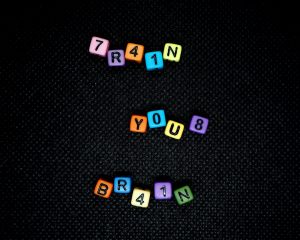This is a short review of the Tozo NC3 hybrid noise-cancelling earbuds.
First, it’s essential to emphasize that noise-cancelling headphones play a unique and crucial role in enhancing ADHD productivity. They remove noise distractions that are beyond our control and replace them with intentional and carefully selected sounds such as music.
One great example of intentionally and carefully selected music is Brain.FM. This streaming service caters to individuals with ADHD and offers looping background music designed to maintain brain focus. Brian.FM is designed to provide music that does not distract, but rather stays in the background and helps focus our attention into an ADHD hyperfocus session.
To this goal, I own several high-end earbuds that sound amazing. I regularly use the Apple AirPods 4, Apple AirPods Pro 2, Bose QC Ultra, and Jaybird Vista earbuds. The lowest priced earbuds in this list are the Apple AirPods 4 Noise Cancelling earbuds, which currently sell for $179 on Apple.com.
Then, I purchased a pair of Tozo NC3 Hybrid Noise-Cancelling earbuds for $49.99, which are currently on sale for $24.98 on Amazon. I bought this pair for traveling, where I’m afraid of losing my more expensive pairs.
To me, the comparison of the Tozo NC3 earbuds with my other expensive earbuds was astonishing. The Tozo earbuds are clear and crisp, with a very strong bass and excellent active noise-cancelling capabilities. These are traits that I would expect from other higher-end earbuds. I was surprised to find these same earbud traits with the $24 Tozo earbuds.
The Tozo NC3 earbuds were amazing; again, especially since they are currently priced under $50. The other higher-end earbuds are a bit more refined, which is expected for earbuds priced at $200 or more. I did not expect the Tozo NC3 to be in the same ballpark as the others…but they were. Their sound was comparable to that of the other high-end earbuds.
Beyond their fantastic sound, the Tozo NC3 had a secret advantage with its proprietary Tozo app. The Tozo app had the same basic features of most earbud apps, such as an EQ and noise-cancelling mode settings. However, their app went further and provided an extensive collection of relaxing noises in several categories of soothing, relaxing, hypnotic, and music.
For example, some of the soothing sounds included “Soft rain”, “Forest Wind and Birds”, and “Forest with Small River”. In the relaxing category, some options include “Gentle Ocean”, “Wind in Trees”, and “Waterfall”. For the most unique category, music, some of the options are “Compy Jazz”, a jazzy “Martini Sunset”, and “Relaxing Piano”. Features like this could easily be found in a paid app, but it was a pleasant surprise to be found in a free app.
Another standout feature unique to these Tozo NC3 earbuds is the inclusion of two different sets of replacement earbuds. One set is made of the typical silicon. The other set is made of Thermoplastic Elastomer (TPE), which is heat-activated and molds better to the inside of your ear.
In the end, I would highly recommend Tozo and their Hybrid Noise Cancelling NC3 earbuds. I think it would be hard to find better earbuds for under $50.




 It’s ok, though, because it’s Friday, and each Friday ends with cool music and fun crafts. At least for the good students. For the students that didn’t behave or finish their homework, we moved to the right side of the classroom.
It’s ok, though, because it’s Friday, and each Friday ends with cool music and fun crafts. At least for the good students. For the students that didn’t behave or finish their homework, we moved to the right side of the classroom.


